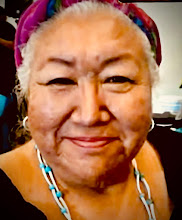From GIRLSNOTBRIDES.ORG
"20,000 girls are forced into marriage everyday. It's a common practice around the world; however, non-profit organizations are trying to educate people in third world countries about this form of child abuse.
Get this 1/3 of girls in developing countries are married before they are 18 years old. These children:
- forced to drop out of school
- experience domestic violence
West and Central Africa have the highest rate of child marriage:
- 1.7 million child brides per year
It's a severe violation of human rights. It's one of the worst forms of child abuse.
Its due to these factors:
- poverty
- illiteracy
- social norms
- traditional norms
The health Factors:
- Pregnancy is one of the leading causes of death for girls ages 15 to 19.
This practice is common in the United States
- 27 States have no minimum age for marriage
- girls as young as 12 can be brides often to men who are decades older than they are
Nepal banned such practice 50 years ago but 30% of underage girls continue to get married illegally.
Indiah this practice still continues in rural communities despite it being made illegal in 2006.
Ending child marriage is very important because one are girls maximize their full potential and contribute towards national development or towards sustainable development goals."
Historically, there are factors that come into play with the deep psychological abuse that indigenous women endeared in these Indian Residential Schools. At the beginning, I thought I would request a list of students who attended St. Dunstan's Industrial School in Calgary. I contacted (National Centre for Truth and Reconciliation) nactr@umanitoba.ca. They emailed me back saying that Industrial Schools did not fall under Indian Residential Schools; however, there were documents based on another person's research paper that stated these Industrial School were basically setup of indigenous boys.
Basically, the Canadian government created the Indian Act to justify killing off the indigenous peoples of Canada. Indigenous women are writing about this Indian Act and its effort to "Tame Indigenous women's sexuality"



No comments:
Post a Comment